
Acacia ancistrocarpa, commonly known as fitzroy wattle, is a shrub belonging to the genus Acacia and the subgenus Juliflorae. The shrub is also known as fish hook wattle, pindan wattle and shiny leaved wattle.
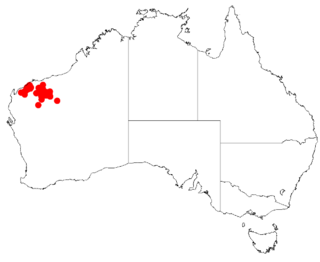
Acacia atkinsiana, commonly known as Atkin's wattle, is a shrub belonging to the genus Acacia and the subgenus Juliflorae endemic to Australia. The indigenous peoples of the area where the shrub is found, the Kurrama peoples, know the shrub as Bilari or Pilarri.

Acacia bromilowiana, commonly known as Bromilow's wattle, is a tree belonging to the genus Acacia and the subgenus Juliflorae that is endemic to a small part of north western Australia.

Acacia effusifolia is a shrub or tree belonging to the genus Acacia and the subgenus Juliflorae. It is native to an area in the Mid West and the Wheatbelt regions of Western Australia.
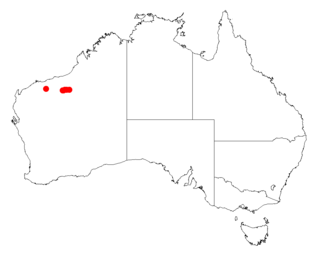
Acacia fecunda, commonly known as Mosquito Creek wattle, is a shrub belonging to the genus Acacia and the subgenus Juliflorae that is endemic to north western Australia.

Acacia hamersleyensis, also known as Karijini wattle or Hamersley Range wattle, is a tree or shrub belonging to the genus Acacia and the subgenus Juliflorae. It is endemic to a small area in central Western Australia.

Acacia heteroneura is a shrub belonging to the genus Acacia and the subgenus Juliflorae that is endemic to western Australia.
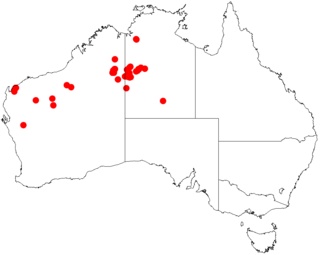
Acacia pachycarpa is a tree or shrub belonging to the genus Acacia and the subgenus Juliflorae that is endemic to central and western parts of northern Australia.

Acacia paraneura, commonly known as weeping mulga, is a tree or shrub belonging to the genus Acacia and the subgenus Juliflorae. It is native to arid regions of Australia. The Indigenous Kurrama peoples know the tree as warlun.

Acacia rhodophloia, commonly known as minni ritchi or western red mulga, is a tree or shrub belonging to the genus Acacia and the subgenus Juliflorae that is endemic to a large area of arid central western Australia. The Indigenous group the Kurrama peoples know the plant as mantaru.

Acacia sibirica, commonly known as bastard mulga or false witchetty bush, is a tree or shrub belonging to the genus Acacia and the subgenus Juliflorae. It is native to arid areas of Australia.

Acacia stipuligera is a tree or shrub belonging to the genus Acacia and the subgenus Juliflorae. It is native to arid and tropical parts of northern Australia.

Acacia subcontorta is a shrub belonging to the genus Acacia and the subgenus Juliflorae that is endemic to central and central western Australia.

Acacia marramamba, commonly known as marramamba, is a shrub or tree belonging to the genus Acacia and the subgenus Phyllodineae that is endemic to arid parts of western Australia.
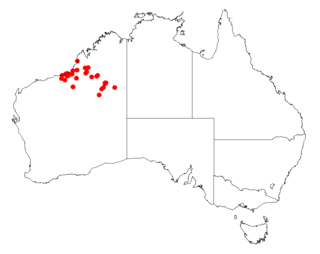
Acacia anaticeps, also known as duck-headed wattle, is a shrub or tree of the genus Acacia and the subgenus Plurinerves. It is native to arid areas of north western Australia.

Acacia arrecta, commonly known as Yarnda Nyirra wattle or Fortescue wattle, is a shrub of the genus Acacia and the subgenus Plurinerves that is endemic to arid areas in north western Australia.

Acacia galeata is a shrub or tree of the genus Acacia and the subgenus Plurinerves that is endemic to an area of western Australia.

Acacia sericophylla is a shrub or tree commonly known as the desert dogwood, desert oak or cork-bark wattle. To the Indigenous Australian people of the Pilbara, the Nyangumarta peoples, it is known as Pirrkala. The species is of the genus Acacia and the subgenus Plurinerves.
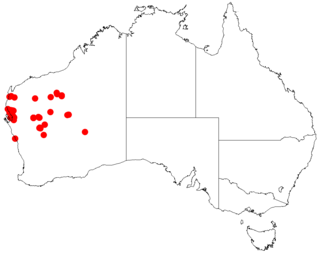
Acacia sibilans, commonly known as the whispering myall, is a shrub or tree of the genus Acacia and the subgenus Plurinerves thar is endemic to an arid areas of central western Australia.

Acacia stellaticeps, commonly known as the Northern star wattle, poverty bush and glistening wattle. Indigenous Australians the Nyangumarta peoples know the bush as pirrnyur or pirrinyurru and the Ngarla peoples know it as panmangu. It is a shrub of the genus Acacia and the subgenus Plurinerves.




















